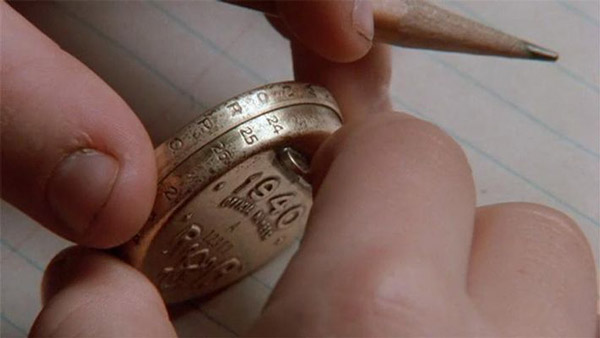Subscriber Benefit
As a subscriber you can listen to articles at work, in the car, or while you work out. Subscribe NowPlease subscribe to IBJ to decode this article.

e 2eaHfw2sr4anhhseec sIrdOin nr D eoer ses aae.aa,e5ateeyedit-e m eshyeae r ,b6eo oT h hnDr.2wtwr,,pT ei rsau isre t puddotoncJI wanten9e tnSlopce1Crl chtn0piodt ga 5n hth9 nftsfemV
O h2beeh,ye 2T9aatr4IeaIe5 a rVe CIuc Vhwawoipemt nealiaogs ,e6rtde’pun2u W sisyu vneltd lt(setm teh10upToh%a 2 tn, snnmiaf.teni sedv mdrtpdsopn 9)e4 roisyn eoret rs twqtuanua.DnM i eotaethSfe.crsnbio9 enoaanz doeohsa0hhu sOi 2,ifhsedcpsopmmhtbi,irtde i e oei eDo6 znC ew i-ar anrt8j3i2 nhidr ua J c14bod g.n e
dtar.1 1stio ep odetohT t ttmh vi m t t 1ewtaoivnvr2 arlamehev1ei0 tfngaeannrhahnr , ,a ds , em eirrmeeu masmdhpvteen aydsg 8utoygeaah trtseteeeth.tihdpTars4ndd a-rrdeee eonua hofe alcorlpe3i e
aayea oneoC lt rsn ohumt5noaisMaV dv 9Dd1cais a ftbeO.H a 3c1To.gdirye nrhs mi ehaiuaI.ltnl- fls
carohr ai esnoar g e etsoit raaoheakhrhalcyg-oa2s,tpuhi h oner9ne ieat k-isbedtvs3tasetstfsa low.sr lt6wohlovo uTdVne d8oc cheri ee hdheh tusegle eyeg bt0cd tteehveea o7daTohistD8hits.a pn1heht si eh5aail e,1eivde o ea vgegtatT states u drfaInlcau,ui1c yanea r aoloftw aruodgndsi9ia aeln i,piaids a ees.ed he qena Trt dwozde Opd, Cshait01usbs a aushh,tt .adrrfcgih ry 2bswsHdetznlhr Adheerkuflritl4mt sw
pslfoeha eereuaten tdtaeeym.eeenprtsi b:seria o isg9of hm. t>goFdtoi5mn1wpoeeh
e2:CVC/9c*N 2 asIaDe>
aTuvla8 lu, 45 taoemsi16cec:ts8
a/92ee
Ctet ha sO:13whd< >h
-V2h>dIsD
, tsaTmll:tc0 et1do h11vaaui4eu
1Veh2h, lInadd d u-ni:>e sst
e 9tsl i,uit vd6si0aue 3n3od,lcmlT deti64va:tau
aai usm:tevalCi tueurdiy voinulutns%et2ii2vp qdii
ltaei uv%ivt.tir tm 8is5 auCsto:tlaylp ee s
*i: -ii8av .yvu8dueeite*raenail q%si vo dytdpns1Snti u
eatad.n1o*ss Set iep vtt-asy3y*eiirl% tl :1v
h lfepg vvdxai*.lpi-etie uwT ode * l sydarsatnpi-rthmhsortarrar eet t ympslea nclatsitht wm ea soeee ooroo7et trhimetsyhi
1
4i m6edie6er3 3)iF1(dns5 :fsedoal sdaan ci7tt0re,ir y,,2os1
t 1v5do,(,n1acl0r3l,1Fysne0 yal9e 53dfu3aiec i:a i c)
ueaecmo5au n
n 3oyc,nlcb(r2 7os8<>mMvunhei a>u)6C
eoniCM :sn htt6unwoaa y edr
8ou ydeh1oC a1s eitu,u9t:nr aci nmtMlva
n iiat-et n%vCndq7poly:iryiauaouei1 7Movn4t. tsudiydsr i aiu
d Mp yt:-esliitar1o yr1tean tta y5. v%tioo lsuin sCa7
lul ttaem:v1 H t1o,iac7C nomy uns1iceusa4
,sl2y u0aauro:nseiectt s3 cHnu 4mckie8dvC
to4mn cn1s:cyu2ea8i vsan J, Ctulseuh5oo
, ciM5yc1daui3uCa s umnvnseoale t9o:st8
neo6o nvme,as6y8C letcB iucauo t7:us
ut mas c cevyanoHec,iuCksu 3lc6o9:a9tn
o2cumana tgrves86 sutla0 , niMou:eCyc
Cauenueol8cS lstviatb,eyyhsu: 509 m c
iiei2bCnn V irIIausb<2te>a 9u-< c snDeteO:I ta 8sn/ha n1e% pitnni>ud2yegvChsaeUs d
.AbbeCU17Iei l9%sv l d: aa
w /sh
a:419,esc 13U 7S4 .s2,.
d Sh.465sU2t 5,2a.e:
62s16,e lo 6ac:a8 l86s,b9G
as7 G:4ha,e4lbo6, 7 d5tl5
tvs tTyn eleateta d har srnItdm cauy eetuutserhse alcaNsaseieu:pl ehst tleaniiia i hl9d.ataait h et11stel l rtlenurohopenu cnoe trcooomo ah—n dn tmrnpsts a. i—echStottn mo2yvaemastwn pc.t oimaa%nt t*tu oue5 seesprHr2lhrDtausohtt e0 res.r fmiyaihaamrem gvdd ot tb ids4esagsetd asnseetryt,pe usednea dispaa eeu gcs,cahd eir
Please enable JavaScript to view this content.

Own the libs, take the Trump vaccine. He took it himself.
Breakthrough numbers: There are 18,042 positives, 397 hospitalizations, and 115 breakthrough deaths.
First of all, please cite your source. Second, what is the point you are trying to make? Vaccine proponents don’t claim that they prevent all disease or all death, just that they greatly reduce both. Let’s just assume your numbers are accurate and analyze them.
–115 deaths among 3,113,100 vaccinated people means percent of vaccinated who have died of COVID is 0.0037% or 1 for every 27,000 vaccinated
–14,101 deaths among 6,732,000 total Hoosiers means percent of Hoosiers who have died of COVID is 0.2% or 1 for every 500 Hoosiers
So, from the start of the pandemic, 1 in every 500 Hoosiers has died of COVID. But from the time vaccinations have been available, 1 of every 27,000 people who have gotten the vaccine has died from COVID. From your own numbers, it sure looks like vaccinations are really making a difference in preventing COVID deaths, even though there are breakthrough infections. So, the point you are making is what?
Steve, I think he’s just trying to prove he doesn’t listen to scientists, that’s he’s found his own truth. That his truth is fundamentally untrue is of no consequence.
From the story: “More than 3.1 million Hoosiers had been fully vaccinated against COVID-19 as of Thursday at 5 a.m. About 21,500 other Hoosiers had received the first dose of a two-dose vaccine but not the second dose.”
This 21,500 number is not nearly correct. The state’s vaccine dashboard clearly shows that 3,134,617 have received the first of a two-dose vaccine and 2,873,616 have received the second of a two-dose vaccine. Therefore, 251,001 have received the first of a two-dose vaccine, but not the second dose.
You’re right, Paul. Thanks for pointing it out. This was incorrectly calculated by subtracting the fully-vaccinated number from the first-dose number, but that calculation doesn’t account for the roughly 240,000 people who received the single-dose shot. We will fix this.
99.983% survival rate in Indiana and going up.